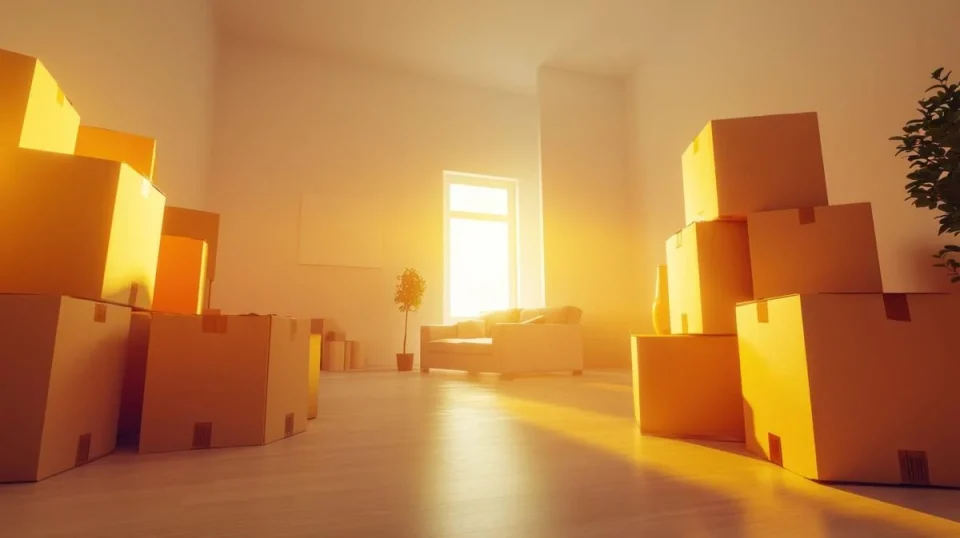Moving to a new home, whether across the street or across the country, is undoubtedly one of life’s most exciting yet challenging experiences. However, what often starts as an exhilarating idea can quickly turn into a whirlwind of stress, confusion, and last-minute chaos. The key to preventing this overwhelming feeling lies in one word: planning.
A well-thought-out moving strategy is crucial for ensuring that your transition is as smooth, efficient, and stress-free as possible. Planning provides structure, organizes tasks, and helps anticipate potential obstacles before they arise. While it may feel tempting to simply pack up your belongings and go, the lack of a cohesive plan can result in unnecessary complications. Below, we’ll explore why planning is essential to a successful move and how you can apply strategic thought to each phase of your relocation.
1. A Sense of Direction and Purpose
At the heart of any successful move is a clear plan that outlines the tasks ahead. The absence of a plan can leave you feeling lost and overwhelmed by the sheer number of responsibilities that come with moving—packing, hiring movers, notifying service providers, and setting up utilities in the new home. Without a clear strategy, you risk missing important details or forgetting critical actions until the last minute.
A moving plan serves as your roadmap, providing direction and structure. Breaking down your move into manageable steps allows you to prioritize and tackle tasks one at a time, reducing the feeling of being overwhelmed. Whether it’s two months or two weeks before the move, having a comprehensive schedule lets you take on each task with confidence, knowing that there’s an actionable next step at every stage.
2. Time Management and Deadlines
Time management is one of the most important aspects of planning a successful move. When you don’t plan ahead, it’s easy to underestimate how much time each task will take. Packing up a kitchen may seem quick, but when you factor in sorting through items, wrapping fragile dishes, and labeling boxes, the time commitment becomes significant. Without a strategy, you might find yourself scrambling as the moving date draws closer.
A well-crafted moving plan ensures you’re aware of the deadlines for each task. For instance, you might decide that packing the kitchen should be done a week before the move, while preparing your bedroom should happen two days prior. Creating a timeline allows you to realistically allocate time to each room or task, ensuring that no part of the process is rushed or neglected. Moreover, by sticking to your timeline, you’ll have ample time to manage unexpected issues—such as delays in getting supplies or last-minute errands.
3. Cost Efficiency
Moving is undoubtedly expensive. From hiring a moving company to purchasing boxes and packing materials, the costs can add up quickly. However, planning in advance allows you to manage these expenses more effectively. A strategic move ensures that you make informed decisions about what services you need, when to book them, and how to minimize unnecessary costs.
For example, early planning gives you the chance to compare moving companies, read reviews, and request quotes to ensure you get the best price. If you’re on a budget, planning ahead can also help you determine which items to move yourself and which items are best suited for a moving service. By identifying these details early, you’ll avoid rushing into last-minute decisions that could be more costly.
Additionally, planning gives you the opportunity to reduce unnecessary purchases. For example, instead of buying new furniture before your move, you may realize that some of your existing pieces can be reupholstered or repurposed. Or, you might find that renting boxes instead of buying them is a more cost-effective option.
4. Minimizing Stress and Chaos
One of the most significant benefits of planning is that it can drastically reduce stress. Moving is inherently stressful, and the more chaotic and unorganized the process, the more overwhelming it becomes. Planning allows you to approach the move with a sense of control, rather than feeling like you’re simply reacting to the unfolding events.
By anticipating and addressing the tasks well in advance, you can avoid those stressful last-minute moments—such as frantically packing up the day before the movers arrive or scrambling to figure out how to transport a bulky item. A strategy gives you ample time to address small problems before they grow into bigger issues, whether that means finding a solution to a scheduling conflict with the movers or making sure your old home is cleaned before you leave.
Moreover, planning helps you manage the emotional aspects of moving. If you know exactly when to pack your valuables, when to disconnect utilities, and when to say goodbye to friends and family, you can approach these tasks with a clear mind, rather than under the pressure of looming deadlines.
5. Preventing Lost or Damaged Items
Packing is often seen as one of the more tedious tasks of moving, but it’s also one of the most important. Without proper planning, you risk damaging your belongings or losing track of important items. A moving plan ensures that each item is packed securely and that everything has a designated place.
Part of the strategy includes preparing properly for packing: gathering the right materials (boxes, bubble wrap, packing peanuts, etc.), setting up a labeling system, and creating an inventory of items to make sure everything is accounted for. If you’re moving electronics or fragile objects, a thoughtful moving plan will involve extra precautions like securing extra padding and ensuring these items are packed first for easy handling.
Furthermore, planning your packing process allows you to declutter before the move. As you go through your items, you can identify things you no longer need, reducing the amount of unnecessary stuff that needs to be transported. This not only saves time but also ensures you’re not spending money to move items you don’t actually want or use anymore.
6. Coordination with Movers and Other Services
Whether you’re hiring a moving company or recruiting friends and family to help with the move, coordination is key. A moving plan allows you to communicate clearly with movers, utility providers, and other necessary parties. It’s easy to forget about informing utility companies about your move, scheduling cleaning services for your old home, or arranging for mail forwarding. These tasks often slip through the cracks when you don’t plan ahead.
By creating a strategy that includes a timeline for notifying the relevant parties—whether it’s canceling or transferring services—you ensure that everything is taken care of on time. When you plan these tasks out, you’re also more likely to avoid surprises and delays, such as power not being turned on in your new home or not having the necessary services in place on moving day.
7. Creating a Smooth Transition into Your New Home
Finally, planning ensures that your transition into your new home is just as smooth as the move itself. The more organized you are, the easier it will be to settle into your new space. Planning the layout of your new home, deciding what needs to be unpacked immediately, and organizing boxes by room will make the first few days in your new home far less stressful.
A successful moving strategy doesn’t just focus on getting items from one place to another—it also considers the long-term adjustment to the new space. Packing essential items in an “open first” box, like toiletries, a change of clothes, and basic kitchenware, can help you settle in quickly while you unpack the rest of your things. Knowing where your key items are and what steps to take in your new home, such as setting up Wi-Fi or arranging furniture, can make your first days much more enjoyable.
Conclusion
Moving may seem simple on the surface, but without proper planning, it can quickly become a chaotic, stressful ordeal. Whether you’re moving down the street or to the other side of the country, a well-organized strategy provides direction, helps manage time and costs, reduces stress, and minimizes the risk of errors. By taking the time to plan your move, you are ensuring not only a smoother relocation process but also a positive transition into your new home. With foresight, attention to detail, and thoughtful preparation, your move can become an exciting new chapter in your life rather than a source of dread.

